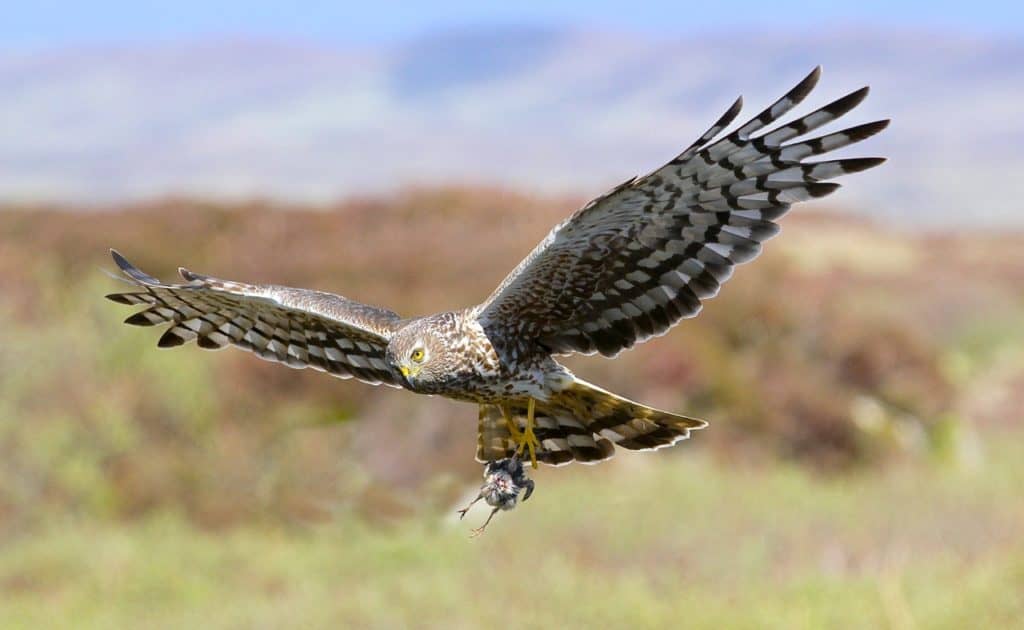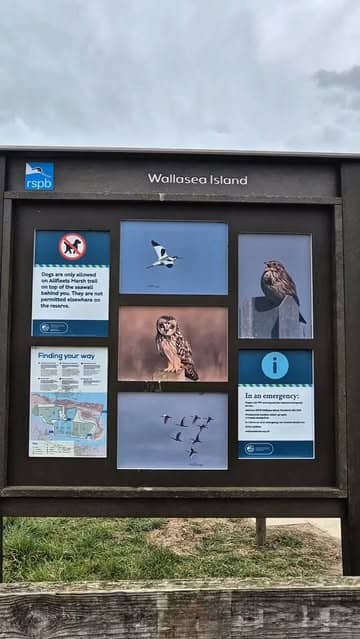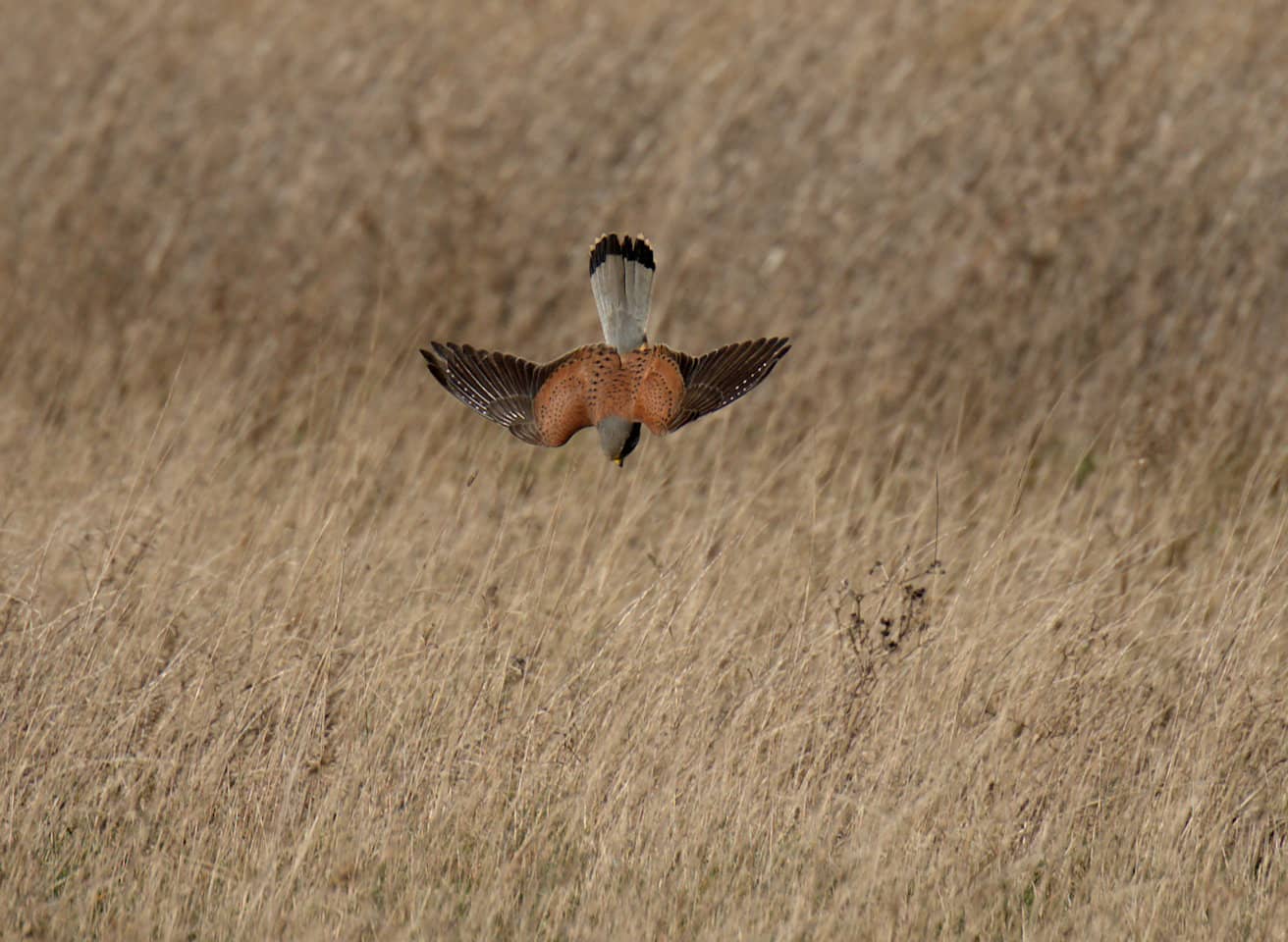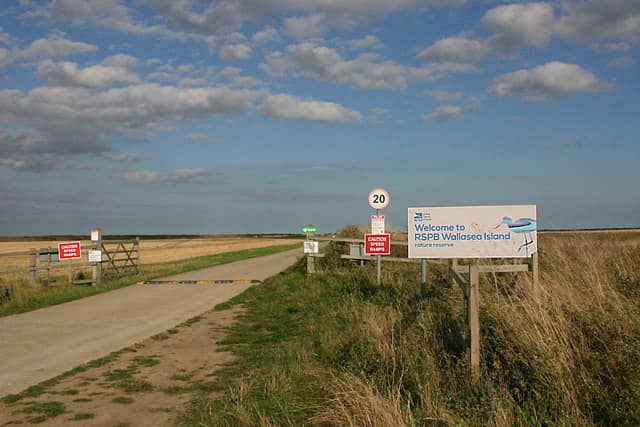Wallasea Island RSPB Reserve
A tranquil coastal reserve with dramatic tidal landscapes, offering exceptional birdwatching and wildlife photography opportunities year-round.

Highlights
Must-see attractions

Social
From TikTok & Reddit
Best Time
Best for raptor sightings
Wallasea Island RSPB Reserve
Best Time
Best for raptor sightings

Highlights
Must-see attractions
A tranquil coastal reserve with dramatic tidal landscapes, offering exceptional birdwatching and wildlife photography opportunities year-round.
"A peculiar beauty to this place, the landscape changing all the time with the tide."
Check Tide Times First! :ocean:
Plan your visit around low tide for the best birdwatching and exploring opportunities. The landscape changes dramatically!
Pack Your Binoculars :binoculars:
Essential for spotting the diverse birdlife. Bring your best pair to truly appreciate the wildlife on this reserve.
Highlights
Discover the most iconic attractions and experiences

Winter Bird Spectacle
Across the reserve
Witness hen harriers and short-eared owls grace the skies during winter months. A must-see for avid birdwatchers and wildlife photographers.

Kestrel Haven
Throughout the reserve
Spot kestrels year-round, hovering and hunting in the open landscapes. Their presence adds a dynamic element to the island's avian population.

Tidal Landscapes
Coastal areas
Experience the peculiar beauty of a landscape that constantly transforms with the ebb and flow of the tide. Peaceful and ever-changing.
Plans like a pro.
Thinks like you
Planning Your Visit
Embrace the Tides
Facilities & Access
Best Times
Insider Tips
from TikTok, Instagram & Reddit
Check Tide Times First! :ocean:
Plan your visit around low tide for the best birdwatching and exploring opportunities. The landscape changes dramatically!
Pack Your Binoculars :binoculars:
Essential for spotting the diverse birdlife. Bring your best pair to truly appreciate the wildlife on this reserve.
Wear Sturdy Footwear :athletic_shoe:
Paths can be uneven and muddy, especially after rain. Comfortable, waterproof shoes are a must for exploring.
Portaloo Availability :toilet:
A trial portaloo is near the car park, but not always guaranteed. Bring your own water and snacks.
Tips
from all over the internet
Check Tide Times First! :ocean:
Plan your visit around low tide for the best birdwatching and exploring opportunities. The landscape changes dramatically!
Pack Your Binoculars :binoculars:
Essential for spotting the diverse birdlife. Bring your best pair to truly appreciate the wildlife on this reserve.
Wear Sturdy Footwear :athletic_shoe:
Paths can be uneven and muddy, especially after rain. Comfortable, waterproof shoes are a must for exploring.
Portaloo Availability :toilet:
A trial portaloo is near the car park, but not always guaranteed. Bring your own water and snacks.
Photography Gear :camera_with_flash:
Ideal for wildlife photography, especially in winter. Telephoto lenses are recommended for capturing distant birds.
What Travellers Say
Reviews Summary
Visitors praise Wallasea Island for its peaceful atmosphere, stunning tidal landscapes, and abundant birdlife, especially during winter. The opportunity for wildlife photography and long, scenic walks is a major draw. However, limited facilities, particularly the availability of toilets, are a recurring point of concern for some.
"Love it here great for birding and wildlife photography especially in the winter months when the hen harriers arrive along with the short eared owls.. Fantastic place for kestrels all year round. Unfortunately no toilets. I understand that rspb are making this amazing reserve wheelchair friendly."
Nick robert Lay
"There is such a peculiar beauty to this place, the landscape changing all the time with the tide, the changing light and the birds wading through it. Very peaceful and quiet, a great place for a couple of hours of walk and watching birds do their thing."
Orsolya Anna Toth
"Beautiful place to go for long, scenic walks and big skies. Loads of birds obviously and oodles of peace and quiet."
Sam Carter
What People Like
What People Dislike
Frequently Asked Questions
🚇 🗺️ Getting There
Wallasea Island RSPB Reserve is accessible by car, with parking available near the reserve entrance. Public transport options are limited, so driving is generally recommended. Check local bus routes if considering public transport, but be prepared for longer travel times.
Yes, there is parking available near the reserve. The 'Wallasea Island Wild Coast project' on Google Maps can help you locate the car park, which is a short drive from the main reserve area.
Cycling is a great way to explore the island and its surroundings. There are cycle paths that can lead you to the reserve, offering scenic views along the way.
The nearest train stations are typically Rochford or Southend Victoria. From these stations, you would need to arrange onward travel, such as a taxi or bus, to reach the reserve.
Follow signs for the 'Wallasea Island Wild Coast project' or use GPS coordinates for the car park. The reserve itself is well-signed once you are on the island.
🎫 🎫 Tickets & Entry
Entry to Wallasea Island RSPB Reserve is generally free for RSPB members and non-members alike. Donations are welcome to support the conservation efforts.
The reserve is typically open year-round during daylight hours, allowing visitors to enjoy the landscape and wildlife at their own pace. Always check the RSPB website for any specific seasonal closures or advisories.
No, there is no admission fee to enter Wallasea Island RSPB Reserve. It's a fantastic free nature reserve for everyone to enjoy.
While the reserve is generally accessible during daylight hours, it's advisable to check tide times as certain areas can be affected by high water.
No booking is required for general visits to Wallasea Island RSPB Reserve. You can simply turn up and explore.
🎫 🧭 Onsite Experience
You can see a wide variety of birds, especially waders and waterfowl, during different seasons. Winter is prime time for hen harriers and short-eared owls, while kestrels are present year-round. The tidal landscape also supports other coastal wildlife.
Yes, there are walking trails that allow you to explore the reserve. These paths offer scenic views and opportunities for birdwatching. The reserve is becoming more wheelchair-friendly.
Yes, families can enjoy the open spaces and the chance to spot wildlife. It's a great place for children to learn about nature and birds in a peaceful setting.
Facilities are limited. There is a trial portaloo near the car park. It's recommended to bring your own water, snacks, and any other necessities.
The RSPB is working to make the reserve more wheelchair-friendly. Some paths are being improved to enhance accessibility for visitors with mobility needs.
🍽️ 🍽️ Food & Dining
There are no cafes or restaurants directly within the Wallasea Island RSPB Reserve itself. Visitors often bring their own food and drinks to enjoy during their visit.
A nearby golf driving range has a cafe which is a convenient option for refreshments. For more extensive dining options, you would need to travel to nearby towns like Southend-on-Sea.
Yes, picnics are welcome at Wallasea Island RSPB Reserve. There are open spaces where you can enjoy your packed lunch while taking in the natural surroundings.
Typically, there are no regular food stalls or vendors operating within the reserve. It's best to come prepared with your own provisions.
The nearby cafe at the golf driving range offers basic refreshments. For a wider selection of pubs and restaurants, you'll need to venture further afield to coastal towns.
📸 📸 Photography
The entire reserve offers fantastic photographic opportunities, especially along the coastal paths and mudflats. The changing light and tidal patterns create unique scenes.
For wildlife photography, a camera with a good zoom lens (telephoto) is highly recommended to capture distant birds. A wide-angle lens can be useful for landscape shots of the expansive skies and coast.
Early mornings and late afternoons often provide the best light for photography, creating beautiful golden hour effects. The 'magic hour' around sunrise and sunset is particularly stunning.
Winter months are excellent for photographing raptors like hen harriers and short-eared owls. Kestrels are a common sight year-round. Waders on the mudflats are also a popular subject.
The weather can be a challenge, with wind and rain being common. Also, the distance to some wildlife subjects may require powerful zoom lenses.
For Different Travelers
Tailored advice for your travel style
👨👩👧 Families with Kids
Remember that facilities are limited, so pack plenty of snacks and drinks. The nearby golf driving range cafe offers a convenient spot for a quick bite if needed. Visiting during low tide can be particularly engaging, as it reveals more of the mudflats and the creatures that inhabit them. It's a great opportunity for kids to connect with nature and learn about coastal ecosystems in a relaxed environment.
📸 Wildlife Photographers
It's advisable to bring a telephoto lens to get close-up shots of birds from a distance, respecting their space. Be prepared for potentially challenging weather conditions; waterproof gear and a sturdy tripod can be invaluable. The reserve's accessibility is improving, making it easier to reach prime photographic locations.
🚶♀️ Walkers & Nature Enthusiasts
Wear comfortable, sturdy footwear as paths can be muddy. While facilities are minimal, the tranquility and natural beauty are the main attractions. It's an ideal spot for a few hours of mindful walking, birdwatching, and simply enjoying the coastal environment.
Deep Dives
In-depth insights and expert knowledge
Birdwatching Paradise
The dynamic landscape, shaped by the tides, provides crucial feeding grounds for these birds. Understanding the tidal patterns is key to maximizing your birdwatching experience. Low tide exposes the mudflats, bringing birds closer to viewing points and revealing a rich source of food. The RSPB actively manages the reserve to maintain and enhance these habitats, ensuring a sustainable environment for its avian residents and visitors alike.
For serious birders, visiting during the winter months is highly recommended. The arrival of migratory species like hen harriers significantly increases the diversity and excitement of sightings. Even outside of peak season, the resident kestrels and various seabirds offer plenty of opportunities for observation and photography.
The Ever-Changing Coastal Landscape
This tidal influence means that the island's appearance can change significantly even within a few hours. The changing light throughout the day further enhances this visual spectacle, casting different hues and shadows across the water and marshland. It's a place that rewards patient observation and encourages visitors to appreciate the subtle, yet profound, shifts in nature.
Visitors are encouraged to check tide times before their visit to best plan their exploration. Experiencing the reserve at both high and low tide can offer two very different, yet equally captivating, perspectives. The peaceful atmosphere, combined with these dramatic natural changes, makes Wallasea Island a truly special destination for those seeking tranquility and natural beauty.

Social
from TikTok, Instagram & Reddit